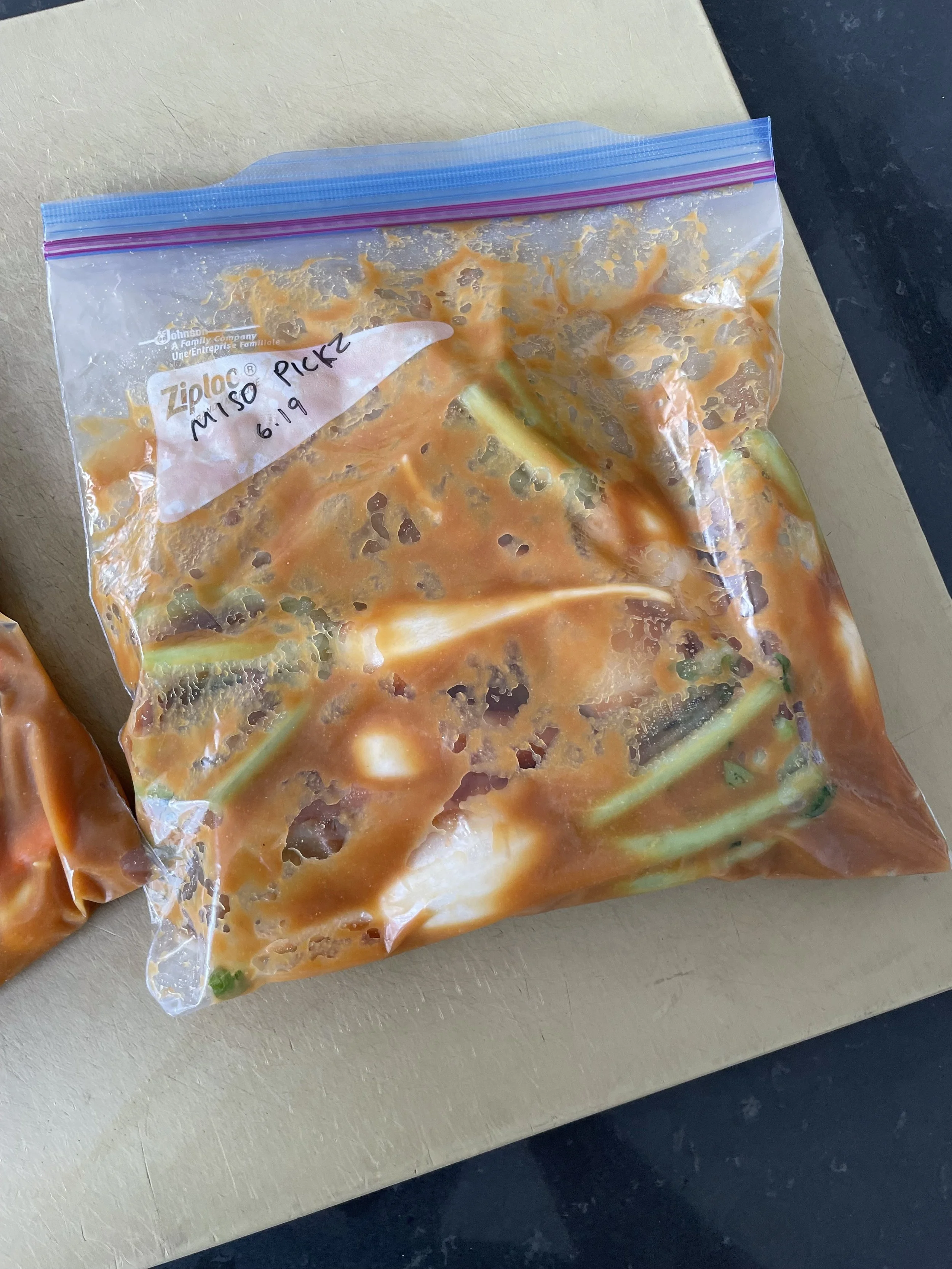Miso Pickles! (Fermented Veggies)
Fermented under a blanket of miso, these pickles are no ordinary crunch bombs. They're born of patience, a rebellion against the instant gratification of modern food culture. Each bite is a statement, not just of flavor but of time-honored tradition and quiet defiance. They're more than just an accompaniment, more than a tick on your culinary to-do list. They're a pause, a punctuation in the hasty narrative of fast food, whispering a tale of slow, careful transformation.
Stumbling upon a humble plate of these miso pickles is like finding an oasis in the culinary desert. You savor the rich umami, the pungent bite of fermentation, the surprising depth of flavor. It's like punk rock in pickle form - an audacious departure from the norm, a palate-rattling protest against the bland and the ordinary. It's the gastronomic equivalent of a power chord, bold, loud, unapologetic.
Let's be clear, these are not your granny's gherkins. They're an adventure, a step off the beaten path, a window into a world where food is more than just fuel, where flavors don't just tickle your tongue but tell a story. These pickles don't sit in the background; they demand to be noticed, their complex notes ringing out in a symphony of sensation. So, grab a jar, embark on the journey and prepare to have your taste buds awakened. 🤘🏼 Adam

Miso Pickles
Ingredients
Instructions
- Begin by preparing your vegetables. Wash them thoroughly, then cut them into slices or strips depending on their size. If you're using cucumbers or zucchinis, you can cut them into thick rounds. If you're using bell peppers or eggplants, you may want to cut them into long strips.
- In a bowl, mix together the miso paste, mirin, and sugar until well combined. The consistency should be like a thick paste that can easily coat the vegetables.
- Take each piece of vegetable and coat it thoroughly with the miso mixture. Make sure all sides of the vegetable piece are covered.
- Once the vegetables are coated, place them in a container that can be sealed. Repeat this process until all the vegetables are coated and in the container.
- Once all the vegetables are in the container, if you have any leftover miso mixture, you can spread it over the top.
- Seal the container and place it in the refrigerator.
- Allow the vegetables to marinate for at least 24 hours. The longer they marinate, the more pronounced the miso flavor will be.
- After marinating, the vegetables can be served as is, or rinsed off lightly if desired to reduce saltiness.
- Enjoy your misozuke as a side dish or a snack.
Adam's Notes
- Remember, the type of miso paste you choose will impact the flavor of your misozuke. Different misos have different flavor profiles, from the lighter, sweeter shiro (white) miso to the darker, saltier aka (red) miso. Choose the one that suits your taste preference.
- If using veg with a lot of water, salt them first to remove moisture to reduce the chance of mold growth.
- Reuse the pickling miso “misodoko” many times then store it in the fridge for up to a month. As It’s used it’ll get more liquidy, just cook the liquid off then store in sealable container in the fridge.






